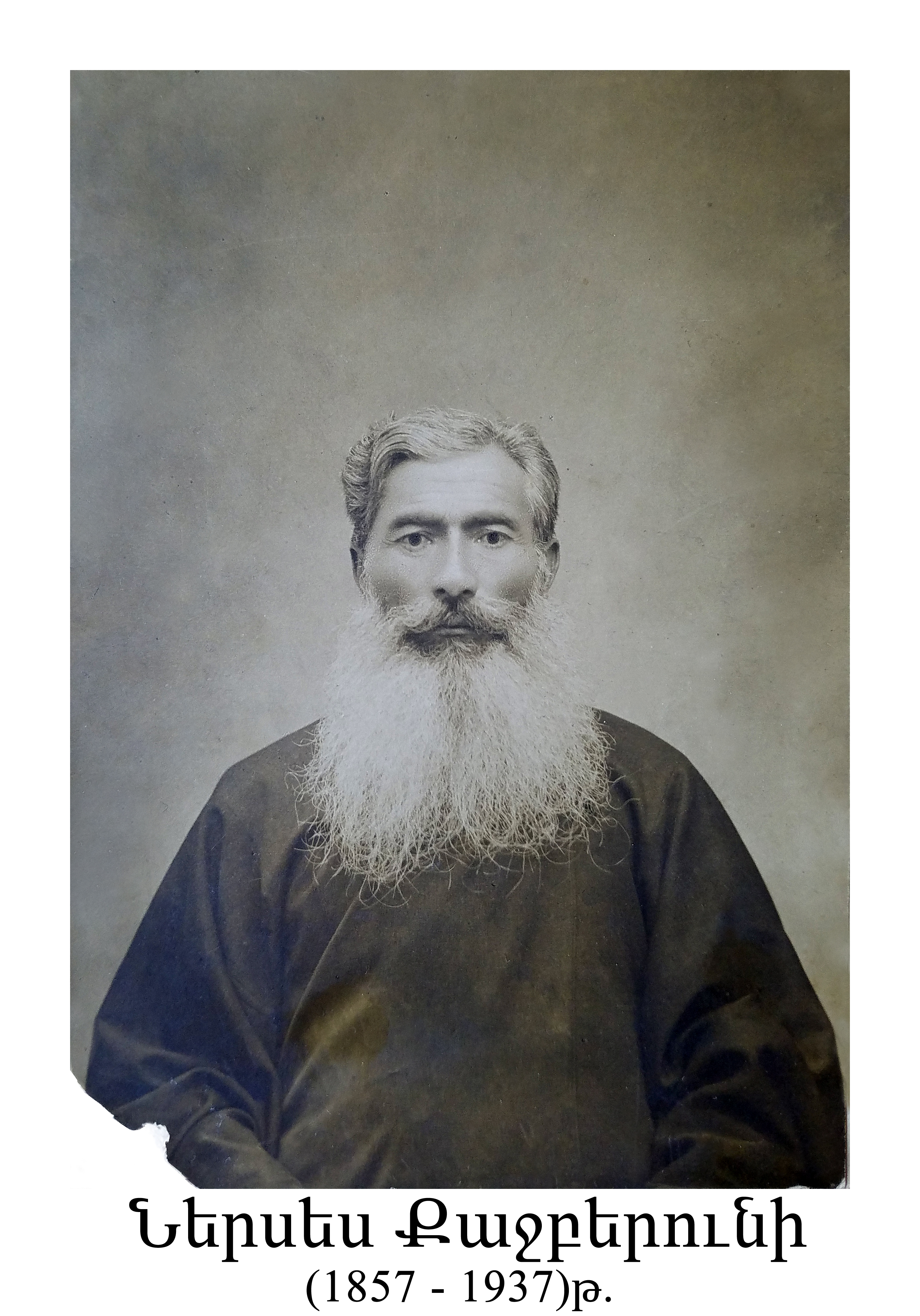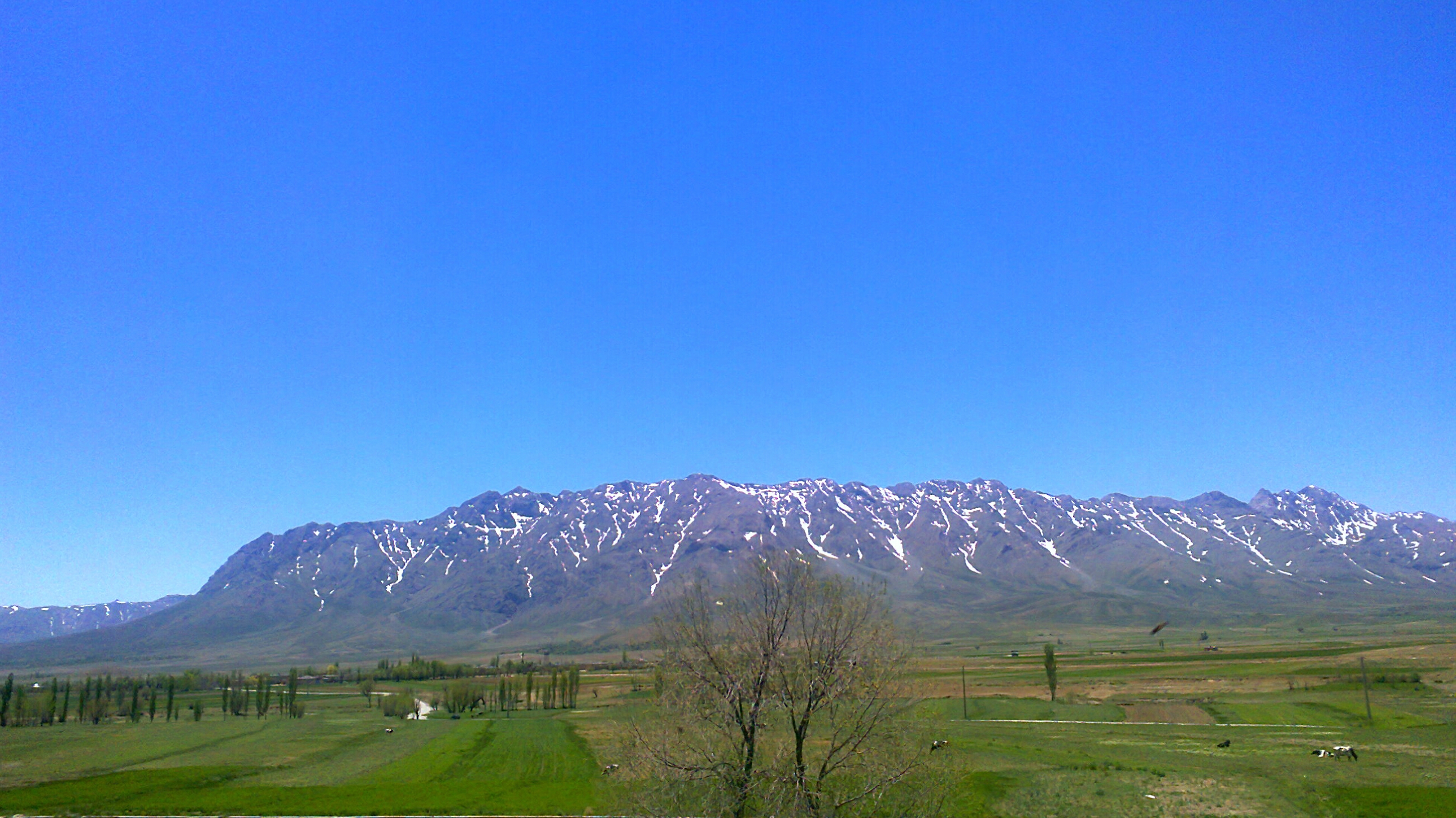|
Kajberuniq
Kajberunik (Armenian: Քաջբերունիք, Աղիովիտ, English: Aghiovit, Qajberuniq, Kajberunik, Russian: Каджберуник) was a historical Armenian canton (Armenian: գավառ / gavar) on a northern shore of Lake Van – located in the eastern Turuberan province, which became known as the Kajberuni princely family's territory. The canton is also known as Arjesh or Arjisho country forenames, which included Irishat and Ororan (Archesh) rivers. History 5th century Kajberunik was part of the Arshakuni Kingdom until its fall in the year 428 AD and was known as a resting area for the younger members of the royal family. Kajberuniq was later integrated in Turuberan Province under the Greater Armenian Kingdom of Bagratuni. The Kajberuni princely family contributed arms and warriors in the Battle of Avarayr against the Persians in 451 AD under the leadership of Nerseh Kajberuni – who was killed during the battle along with seven other members of the family. 7th centu ... [...More Info...] [...Related Items...] OR: [Wikipedia] [Google] [Baidu] |
Erciş
Erciş (; ku, Erdiş; hy, Ականց, Akants, historically , ''Arjesh'') is a town and district located in the Van Province, Turkey on Lake Van. History of Artchesh During Classical Antiquity, the town was known as Arsissa, and Archesh (Arčeš) in Armenian and Arjish in Arabic. The Byzantines knew it as Arzes (Ἂρζες or Ἀρζές) and the 10th-century emperor Constantine VII Porphyrogennetos wrote in his '' De administrando imperio'' (Chapter XLIV) that it was under the rule of the Kaysite emirate of Manzikert. This small district served as the capital city of a number of ruling states. It was the main center of the province of Turuberan as part of the ancient Kingdom of Armenia. The city changed hands on several occasions between the Arabs and the Byzantines, in the early Middle Ages. From the mid 1020s onwards Archesh was governed by the Byzantines. In 1054, it was captured and sacked by the Seljuk Turks commanded by Tuğrul after an eight-day siege. It was for ... [...More Info...] [...Related Items...] OR: [Wikipedia] [Google] [Baidu] |
Fereydan
Fereydan ( fa, فریدن, ka, ფერეიდანი, hy, Փերիա) is a region of Isfahan Province, Iran. Georgians in Fereydan The Fereydan Georgians ( ka, ფერეიდნელები) are an ethnic subgroup of the Georgian people who live mostly in the city of Fereydunshahr and in the Fereydan region of Iran. Origins Although there have been Georgian migrations into Iran - sometimes voluntary, but mainly forced - since the time of shah Tahmasp I, the presence of a large Georgian community in Iran dates mainly from the reign of shah Abbas I. During the Persian punitive campaign undertaken in eastern Georgia by Shah Abbas in 1614–17 against his (formerly most loyal) Georgian subject Teimuraz I, both the region of Kakheti and the city of Tbilisi were devastated, and a large part of the population forced into exile. Soon after the triumphal return of Shah Abbas to Persia in 1617 following his Georgian campaign, some 200,000 ethnic Georgians from Kakheti ... [...More Info...] [...Related Items...] OR: [Wikipedia] [Google] [Baidu] |
Abbas I Of Persia
Abbas I ( fa, ; 27 January 157119 January 1629), commonly known as Abbas the Great (), was the 5th Safavid dynasty, Safavid Shah (king) of Safavid Iran, Iran, and is generally considered one of the greatest rulers of Iranian history and the Safavid dynasty. He was the third son of Mohammad Khodabanda, Shah Mohammad Khodabanda. Although Abbas would preside over the apex of Safavid Iran's military, political and economic power, he came to the throne during a troubled time for the country. Under the ineffective rule of his father, the country was riven with discord between the different factions of the Qizilbash army, who killed Abbas' mother and elder brother. Meanwhile, Iran's enemies, the Ottoman Empire (its archrival) and the Uzbeks, exploited this political chaos to seize territory for themselves. In 1588, one of the Qizilbash leaders, Murshid Qoli Khan, overthrew Shah Mohammed in a coup and placed the 16-year-old Abbas on the throne. However, Abbas soon seized power for himself. ... [...More Info...] [...Related Items...] OR: [Wikipedia] [Google] [Baidu] |
Sureshjan, Isfahan
Sureshjan ( fa, سورشجان, also Romanized as Sūreshjān, Sooreshjan, and Sowreshjān; also known as Shareshkan, Shirishgūn, Sorūshgān, and Sorūshjān) is a village in Barf Anbar Rural District, in the Central District of Fereydunshahr County, Isfahan Province, Iran Iran, officially the Islamic Republic of Iran, and also called Persia, is a country located in Western Asia. It is bordered by Iraq and Turkey to the west, by Azerbaijan and Armenia to the northwest, by the Caspian Sea and Turkmeni .... At the 2006 census, its population was 691, in 171 families. See also * Peria * Shurishkan Gospel References Populated places in Fereydunshahr County {{Fereydunshahr-geo-stub ... [...More Info...] [...Related Items...] OR: [Wikipedia] [Google] [Baidu] |
Facebook
Facebook is an online social media and social networking service owned by American company Meta Platforms. Founded in 2004 by Mark Zuckerberg with fellow Harvard College students and roommates Eduardo Saverin, Andrew McCollum, Dustin Moskovitz, and Chris Hughes, its name comes from the face book directories often given to American university students. Membership was initially limited to Harvard students, gradually expanding to other North American universities and, since 2006, anyone over 13 years old. As of July 2022, Facebook claimed 2.93 billion monthly active users, and ranked third worldwide among the most visited websites as of July 2022. It was the most downloaded mobile app of the 2010s. Facebook can be accessed from devices with Internet connectivity, such as personal computers, tablets and smartphones. After registering, users can create a profile revealing information about themselves. They can post text, photos and multimedia which are shared with any ... [...More Info...] [...Related Items...] OR: [Wikipedia] [Google] [Baidu] |
Eastern Armenia
Eastern Armenia ( hy, Արևելյան Հայաստան ''Arevelyan Hayastan'') comprises the eastern part of the Armenian Highlands, the traditional homeland of the Armenian people. Between the 4th and the 20th centuries, Armenia was partitioned several times, and the terms ''Eastern'' and ''Western Armenia'' have been used to refer to its respective parts under foreign occupation or control, although there has not been a defined line between the two. The term has been used to refer to: * Persian Armenia (a vassal state of the Persian Empire from 387, fully annexed in 428) after the country's partition between the Byzantine and Sassanian empires and lasted until the Arab conquest of Armenia in the mid-7th century. * Iranian Armenia (1502–1813/1828), which covered the period of Eastern Armenia during the early-modern and late-modern era when it was part of the various Iranian empires, up to its annexation by the Russian Empire ( 1813 and 1828). *Russian Armenia (1828 to 1917) ... [...More Info...] [...Related Items...] OR: [Wikipedia] [Google] [Baidu] |
Armenian Genocide
The Armenian genocide was the systematic destruction of the Armenians in the Ottoman Empire, Armenian people and identity in the Ottoman Empire during World War I. Spearheaded by the ruling Committee of Union and Progress (CUP), it was implemented primarily through the mass murder of around one million Armenians during death marches to the Syrian Desert and the Forced conversion, forced Islamization of Armenian women and children. Before World War I, Armenians occupied a protected, but subordinate, place in Ottoman society. Large-scale massacres of Armenians occurred Hamidian massacres, in the 1890s and Adana massacre, 1909. The Ottoman Empire suffered a series of military defeats and territorial losses—especially the 1912–1913 Balkan Wars—leading to fear among CUP leaders that the Armenians, whose homeland in the eastern provinces was viewed as the heartland of the Turkish nation, would seek independence. During their invasion of Caucasus campaign, Russian and Per ... [...More Info...] [...Related Items...] OR: [Wikipedia] [Google] [Baidu] |
Hamidian Massacres
The Hamidian massacres also called the Armenian massacres, were massacres of Armenians in the Ottoman Empire in the mid-1890s. Estimated casualties ranged from 100,000 to 300,000, Akçam, Taner (2006) '' A Shameful Act: The Armenian Genocide and the Question of Turkish Responsibility'' p. 42, Metropolitan Books, New York resulting in 50,000 orphaned children. The massacres are named after Sultan Abdul Hamid II, who, in his efforts to maintain the imperial domain of the declining Ottoman Empire, reasserted pan-Islamism as a state ideology. Although the massacres were aimed mainly at the Armenians, in some cases they turned into indiscriminate anti-Christian pogroms, including the Diyarbekir massacres, where, at least according to one contemporary source, up to 25,000 Assyrians were also killed.. The massacres began in the Ottoman interior in 1894, before they became more widespread in the following years. The majority of the murders took place between 1894 and 1896. The m ... [...More Info...] [...Related Items...] OR: [Wikipedia] [Google] [Baidu] |




.jpg)